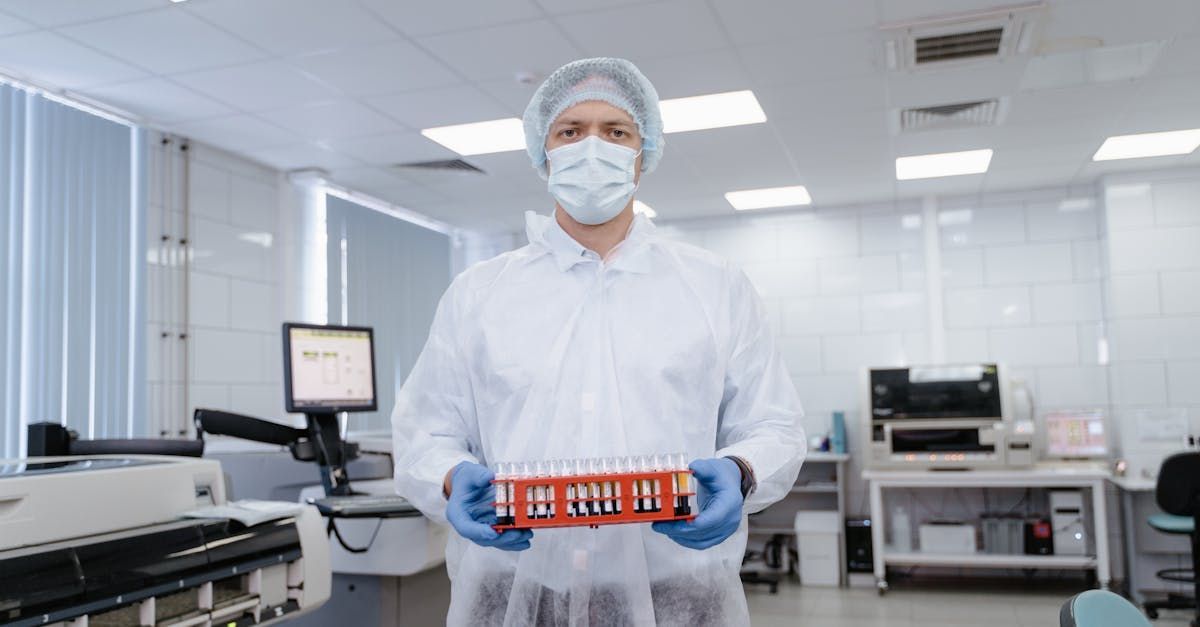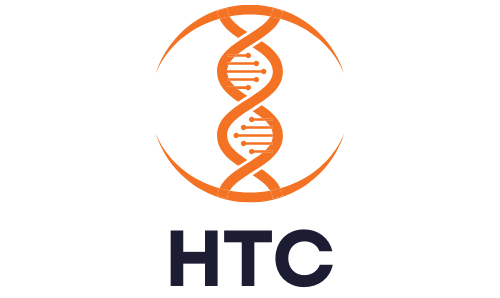Investing in HealthTech for Environmental Health
Environmental health encompasses the study of how environmental factors impact human health and the ecosystem. As the world grapples with pollution, climate change, and hazardous substances, there is an urgent need for innovative solutions to mitigate these threats. HealthTech, which combines health and technology, is emerging as a critical player in addressing these challenges. The intersection of HealthTech and environmental health offers promising investment opportunities that can drive both financial returns and positive societal impact. This blog explores HealthTech innovations focused on environmental health and their potential for investors.
Understanding Environmental Health
Environmental health is a branch of public health focused on the interactions between the environment and human health. It aims to identify and mitigate environmental risk factors that can affect health. This includes assessing the quality of air, water, and soil, as well as managing waste and controlling hazardous substances.
- Pollution: Air and water pollution are significant concerns. Industrial emissions, vehicle exhaust, and improper waste disposal contribute to poor air quality and water contamination, leading to respiratory illnesses, cardiovascular diseases, and other health problems.
- Climate Change: The changing climate exacerbates health risks by increasing the frequency and severity of extreme weather events, spreading vector-borne diseases, and affecting food and water supplies.
- Hazardous Substances: Exposure to hazardous chemicals, such as pesticides and heavy metals, poses serious health risks. These substances can lead to chronic conditions, including cancer and neurological disorders.
Environmental factors play a crucial role in determining health outcomes. For instance, long-term exposure to polluted air can lead to chronic respiratory diseases, while contaminated water can cause gastrointestinal infections. Climate change affects health by increasing the prevalence of diseases and impacting mental health due to stress and displacement.
The Role of HealthTech in Environmental Health
HealthTech leverages technology to address environmental health challenges by improving data collection, analysis, and dissemination. It involves using advanced technologies such as sensors, the Internet of Things (IoT), data analytics, and artificial intelligence (AI) to monitor and manage environmental health risks.
- Sensors: Sensors are used to detect and monitor environmental pollutants. For example, air quality sensors measure levels of particulate matter, ozone, and other harmful pollutants.
- IoT: The IoT connects devices and sensors to collect and transmit data in real-time. This enables continuous monitoring of environmental conditions and quick responses to emerging threats.
- Data Analytics: Data analytics tools analyze vast amounts of environmental data to identify patterns and predict future risks. These insights help in making informed decisions for environmental health management.
- AI: AI algorithms process complex datasets to provide accurate predictions and recommendations. AI can model the spread of diseases linked to environmental factors and suggest mitigation strategies.
HealthTech applications in environmental health are diverse. For instance, air quality monitoring technologies use sensors and IoT to provide real-time data on pollution levels. Water contamination detection systems employ advanced analytics to identify pollutants and their sources. Waste management solutions use AI to optimize recycling processes and reduce environmental impact. Climate change adaptation technologies leverage predictive analytics to prepare for and mitigate the effects of extreme weather events.
HealthTech Innovations in Environmental Health
HealthTech innovations are revolutionizing the approach to managing environmental health. These innovations range from sophisticated air quality monitoring systems to advanced water contamination detection technologies.
Air quality monitoring technologies have become increasingly sophisticated, employing a network of sensors to measure pollutants such as particulate matter (PM2.5 and PM10), nitrogen dioxide (NO2), sulfur dioxide (SO2), and ozone (O3). These sensors are often connected to IoT platforms that provide real-time data to both authorities and the public. Companies like IQAir and AirVisual have developed mobile apps that allow users to check air quality indices in real-time, enabling them to make informed decisions about outdoor activities.
Water contamination detection systems have advanced to include portable devices and automated monitoring stations that test for a wide range of contaminants, including heavy metals, pathogens, and chemical pollutants. Technologies like CRISPR-based diagnostic tools have been adapted for rapid water testing, providing accurate results in a matter of minutes. Startups like Lishtot have created devices that can detect contamination in drinking water with high sensitivity and specificity.
AI and machine learning are being applied to waste management to improve sorting processes and optimize recycling efforts. Smart bins equipped with sensors and image recognition technology can sort waste automatically, reducing contamination in recycling streams. Additionally, blockchain technology is being used to track waste from its source to disposal, ensuring accountability and improving waste management practices.
Climate change adaptation technologies are essential for mitigating the impacts of extreme weather events and long-term climatic shifts. Predictive analytics and AI models help forecast weather patterns and their potential health impacts. Solutions like early warning systems for heatwaves and floods, and adaptive infrastructure planning are becoming increasingly vital. Companies like The Climate Corporation are using big data and AI to provide farmers with insights on weather patterns, helping them to adapt their practices and reduce the impact of climate change on food production.
Benefits of HealthTech in Environmental Health
HealthTech significantly enhances the ability to monitor environmental conditions and collect data. Continuous and real-time data collection allows for the early detection of environmental hazards, leading to timely interventions. This improved monitoring helps in understanding the dynamics of environmental health risks and developing effective mitigation strategies.
The use of predictive analytics and AI enables the forecasting of potential health risks associated with environmental factors. By analyzing historical and real-time data, these technologies can predict outbreaks of diseases related to environmental conditions, such as asthma exacerbations due to poor air quality or waterborne diseases following heavy rainfall.
Implementing HealthTech solutions in environmental health can lead to significant cost savings. For example, early detection of pollutants can prevent costly health interventions and reduce the economic burden of disease outbreaks. Optimized waste management systems can reduce the costs associated with waste disposal and recycling. Overall, HealthTech enhances the efficiency of resource use in managing environmental health.
HealthTech solutions aid in regulatory compliance by providing accurate and real-time data on environmental conditions. This data helps regulatory bodies enforce environmental standards and ensure public safety. Furthermore, HealthTech facilitates effective public health interventions by providing timely information to healthcare providers and policymakers.
Challenges and Risks
Despite the promise of HealthTech in addressing environmental health issues, several challenges and risks must be considered. One major challenge is the high cost of developing and implementing advanced technologies. Small communities and developing countries may find it difficult to afford these solutions, limiting their accessibility.
Regulatory and compliance hurdles can also pose significant challenges. HealthTech solutions must comply with a myriad of regulations related to environmental standards, data privacy, and public health. Navigating these regulatory frameworks can be complex and time-consuming, potentially delaying the deployment of critical technologies.
The collection and use of environmental health data raise important privacy and security concerns. Ensuring the confidentiality and integrity of data is crucial, especially when it involves personal health information. Robust data protection measures and compliance with data privacy regulations are essential to maintain public trust and prevent data breaches.
To overcome these challenges, stakeholders must adopt a collaborative approach. Public-private partnerships can help share the costs and risks associated with developing HealthTech solutions. Regulatory bodies should work closely with innovators to streamline compliance processes and provide clear guidelines. Additionally, investing in cybersecurity measures and data protection technologies can mitigate privacy and security risks.
Investment Opportunities in Environmental HealthTech
Notable Labs stands at the forefront of integrating precision medicine into healthcare, demonstrating how advanced genetic and molecular analyses can be seamlessly incorporated into standard healthcare coverage. By leveraging these advanced techniques, Notable Labs collaborates with insurers and healthcare providers to pioneer innovative approaches that ensure precision medicine treatments are accessible and affordable for all patients.
Their commitment to evidence-based practices and robust clinical data supports the development of reimbursement policies that recognize the value and cost-effectiveness of precision medicine. Notable Labs exemplifies the potential for precision medicine to transform patient care and improve health outcomes, setting a new standard for integrating cutting-edge medical advancements into everyday healthcare. As a leader in the field, Notable Labs is paving the way for a future where personalized healthcare is the norm, ensuring that each patient receives the most effective and individualized treatment possible.
Investing in HealthTech companies that focus on environmental health presents significant opportunities for both financial returns and positive societal impact. Promising areas include air quality monitoring, water contamination detection, waste management, and climate change adaptation technologies. Investors should look for companies with a strong track record of innovation, a clear business model, and the potential for scalability.
When considering investments in environmental HealthTech, several factors should be taken into account. These include the market potential of the technology, the regulatory landscape, the strength of the management team, and the company's ability to demonstrate measurable impact. Due diligence is crucial to ensure that the technology is viable and that the company has a sustainable business strategy.
Investors should also consider their investment horizon. While some HealthTech solutions may offer quick returns, others may require a longer-term commitment to realize their full potential. Long-term investments in innovative technologies that address fundamental environmental health challenges are likely to yield substantial returns over time.
Recent investments in environmental HealthTech have shown promising results. For example, investments in companies like Aclima, which provides air quality monitoring solutions, have led to significant advancements in real-time pollution tracking. Similarly, funding for startups like Lishtot has enabled the development and deployment of portable water testing kits, improving water quality monitoring in underserved regions.
Future Trends and Innovations
The future of HealthTech for environmental health is marked by several emerging trends. One such trend is the increasing use of AI and machine learning to analyze environmental data and predict health risks. These technologies are expected to become more sophisticated, providing more accurate and actionable insights.
Technological advancements are also driving the development of more affordable and scalable solutions. For instance, the cost of sensors and IoT devices continues to decline, making it feasible to deploy these technologies in a wider range of settings. Additionally, advancements in blockchain technology are enhancing the transparency and traceability of environmental data, improving regulatory compliance and public trust.
Over the next decade, HealthTech is expected to play an increasingly critical role in addressing environmental health challenges. Innovations in genetic testing, telemedicine, and AI will likely lead to new diagnostic and treatment options for rare diseases. The integration of HealthTech solutions into everyday healthcare practices will become more seamless, improving the overall efficiency and effectiveness of environmental health management.
Conclusion
In summary, HealthTech offers immense potential for addressing environmental health challenges. Innovations in air quality monitoring, water contamination detection, waste management, and climate change adaptation are transforming the way we manage environmental health risks. These technologies not only improve public health outcomes but also offer significant investment opportunities.
The integration of HealthTech into environmental health is a promising frontier that requires the collaboration of multiple stakeholders, including investors, innovators, regulatory bodies, and the public. By supporting and investing in HealthTech solutions, we can drive meaningful change and create a healthier, more sustainable future.
Investors have a unique opportunity to make a difference by supporting HealthTech solutions that address critical environmental health issues. By investing in innovative technologies and companies, they can contribute to improving public health while achieving substantial financial returns. The future of environmental health lies in the successful integration of technology, and with the right investments, we can ensure a healthier planet for generations to come.










